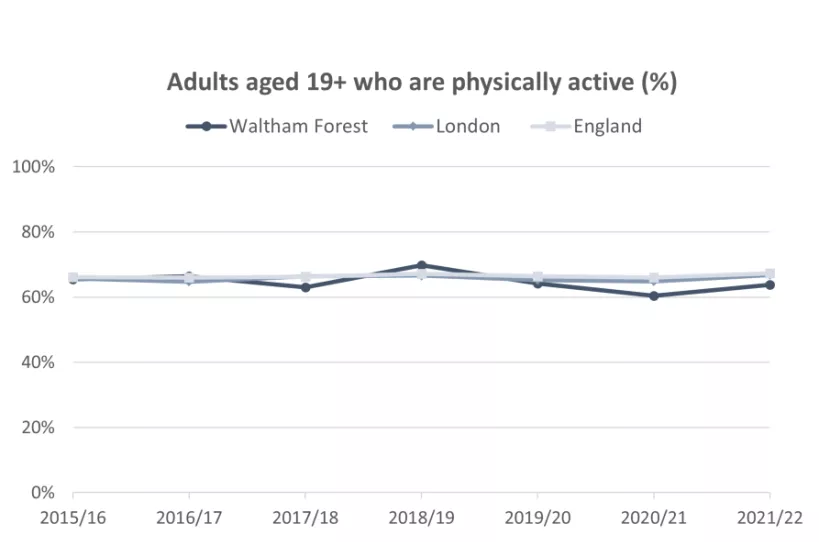Last updated: 31 May 2024
Next review: 1 December 2024
This content is part of the Waltham Forest JSNA. To see other JSNA content, visit the JSNA landing page
Physical inactivity is the fourth leading risk factor for global mortality accounting for 6% of deaths globally. People who have a physically active lifestyle have a 20 to 35% lower risk of cardiovascular disease, coronary heart disease and stroke compared to those who have a sedentary lifestyle. Regular physical activity is also associated with a reduced risk of diabetes, obesity, osteoporosis and some cancers, and with improved mental health. In older adults, physical activity is also associated with improved ability to perform activities of daily living that promote independence and wellbeing (such personal care and remaining mobile). The estimated direct cost of physical inactivity to the NHS across the UK is over £0.9 billion per year [1].
According to the latest Sport England’s Active Lives Adult Survey in 2021 and 2022, around two thirds of respondents in Waltham Forest aged 19 and over were considered physically active (63.8%), broadly similar to London and England averages (66.8% and 67.3% respectively). Respondents were considered physically active if they reported doing at least 150 minutes a week of moderate intensity physical activity (or equivalent) in bouts of 10 minutes or more in the previous 28 days. The activities included in the estimates include sporting activities, fitness activities, cycling for leisure or sport, cycling for travel, walking for leisure or travel, gardening.

Source: OHID Public Health Outcomes Framework. Data from Office for Health Improvement and Disparities (Active Live Survey). Date accessed: 13 April 2023.
References:
[1] Office for Health Improvement and Disparities. Physical Activity Profile. Date accessed 12 May 2023